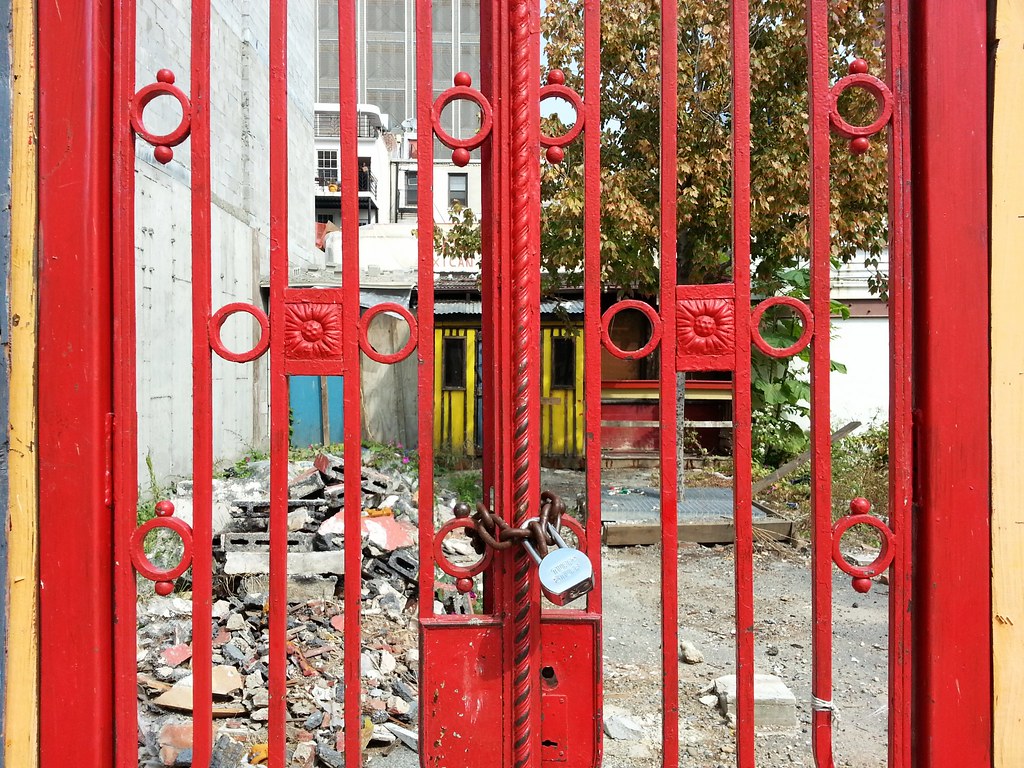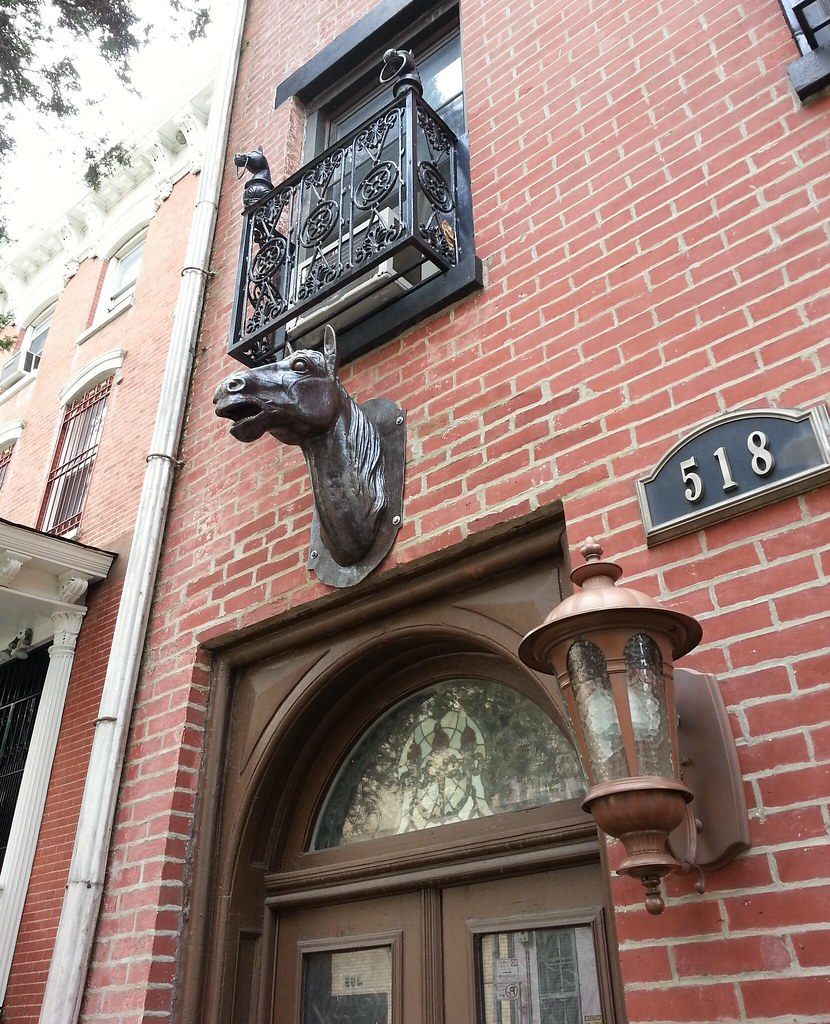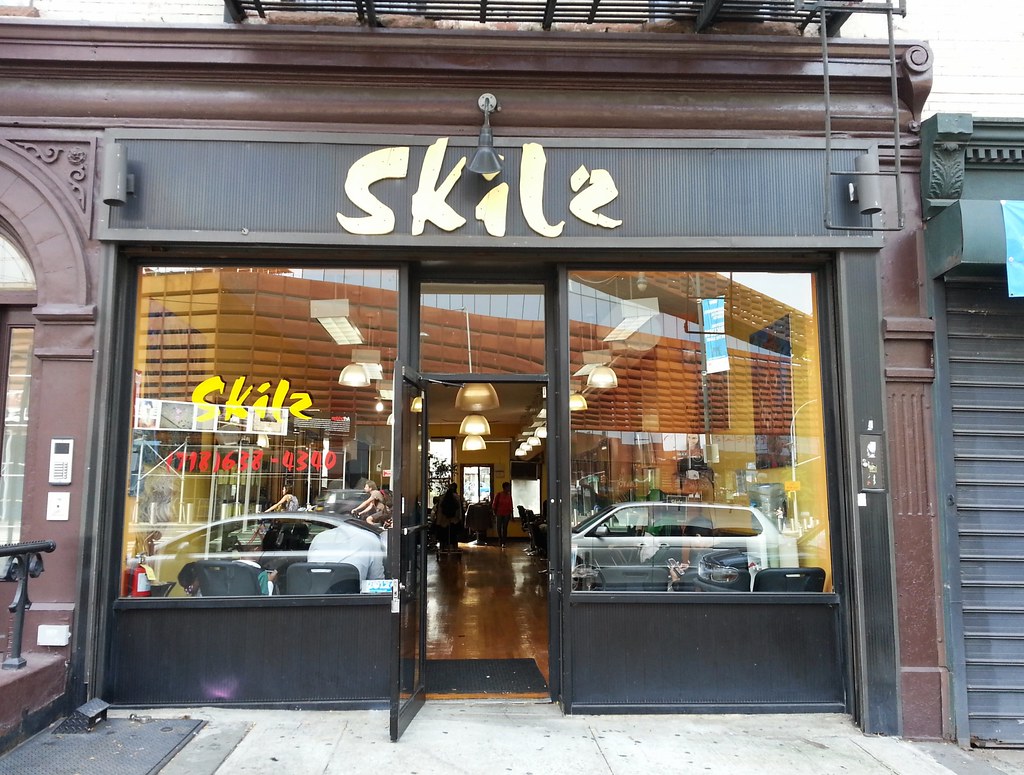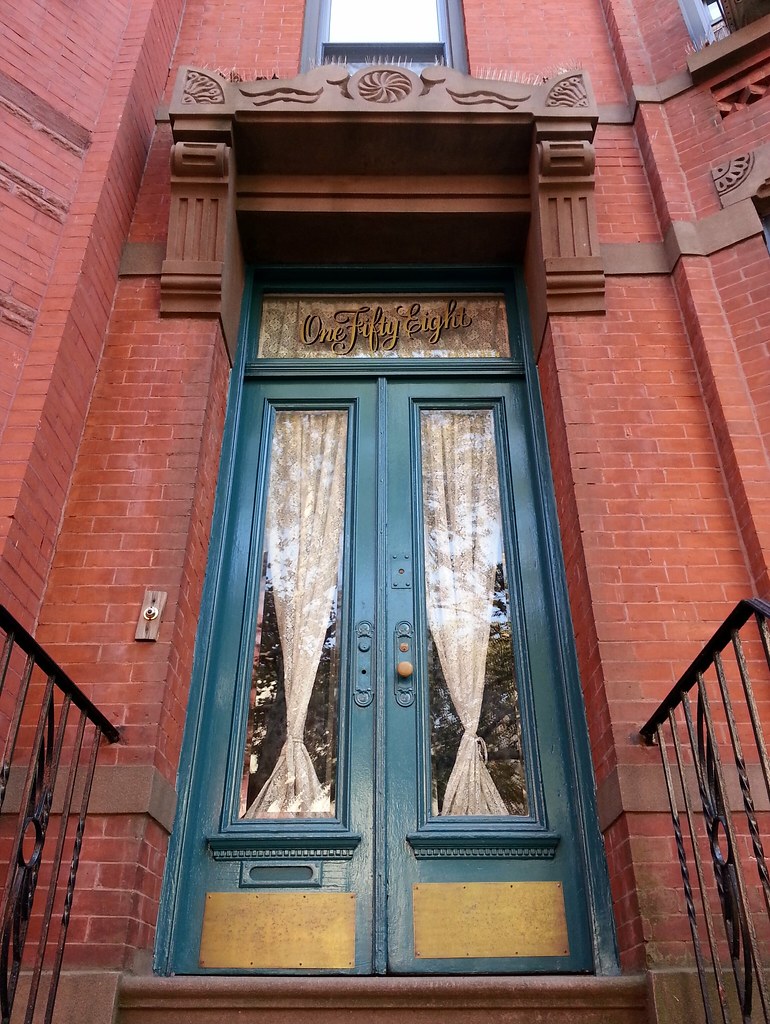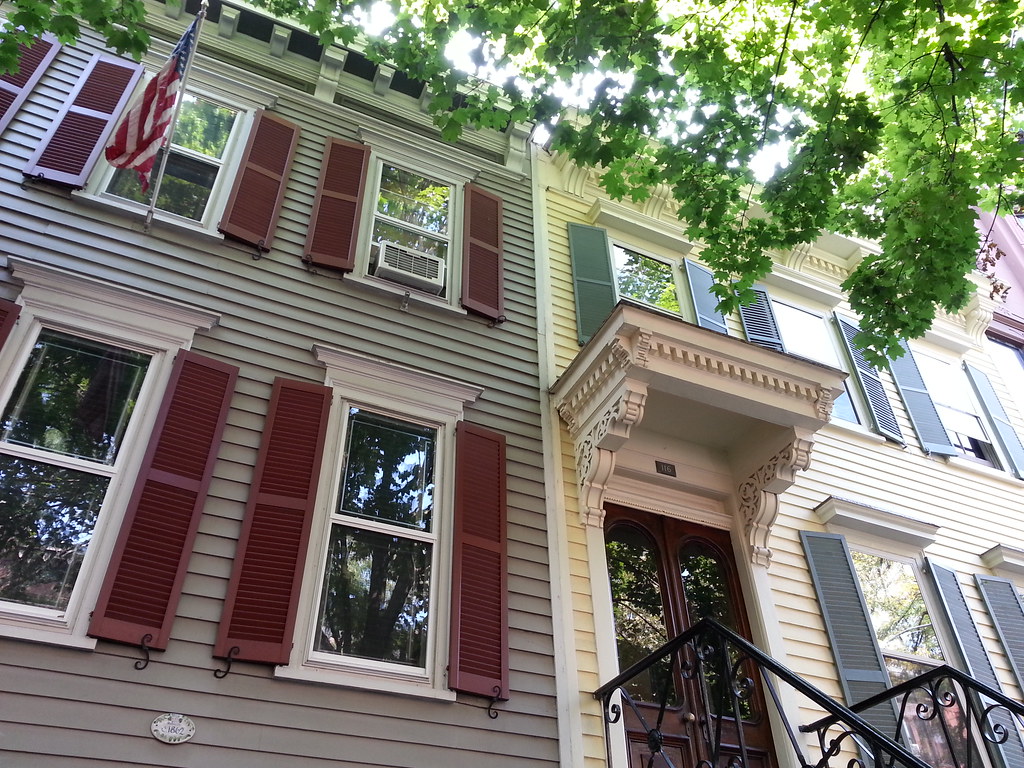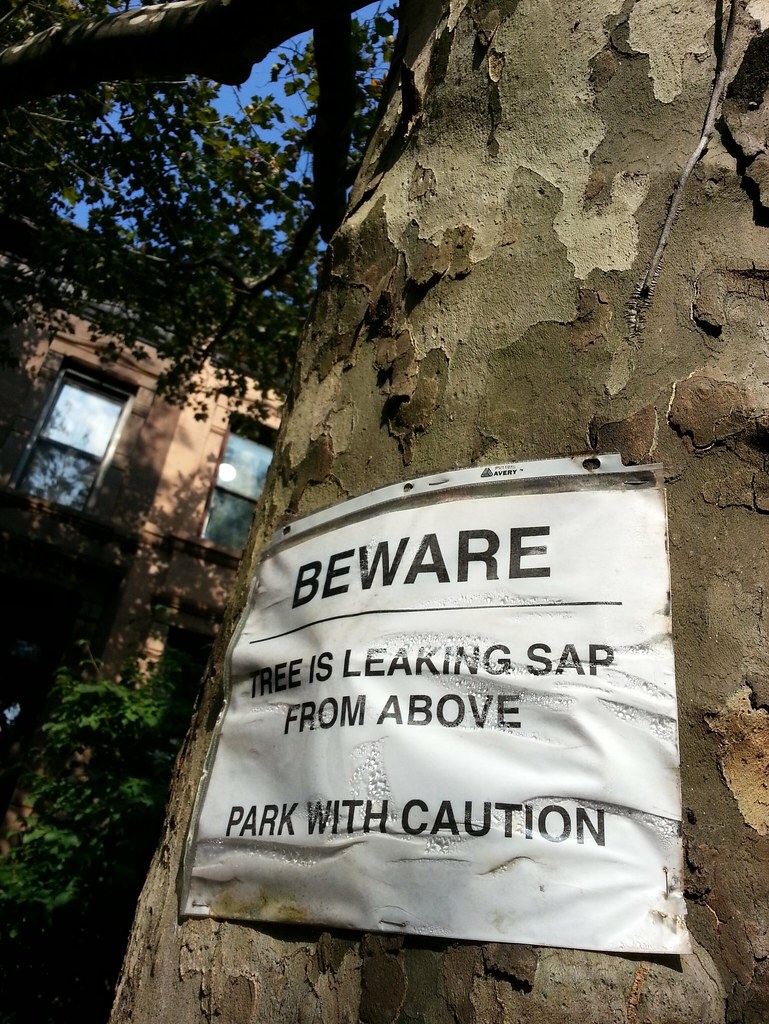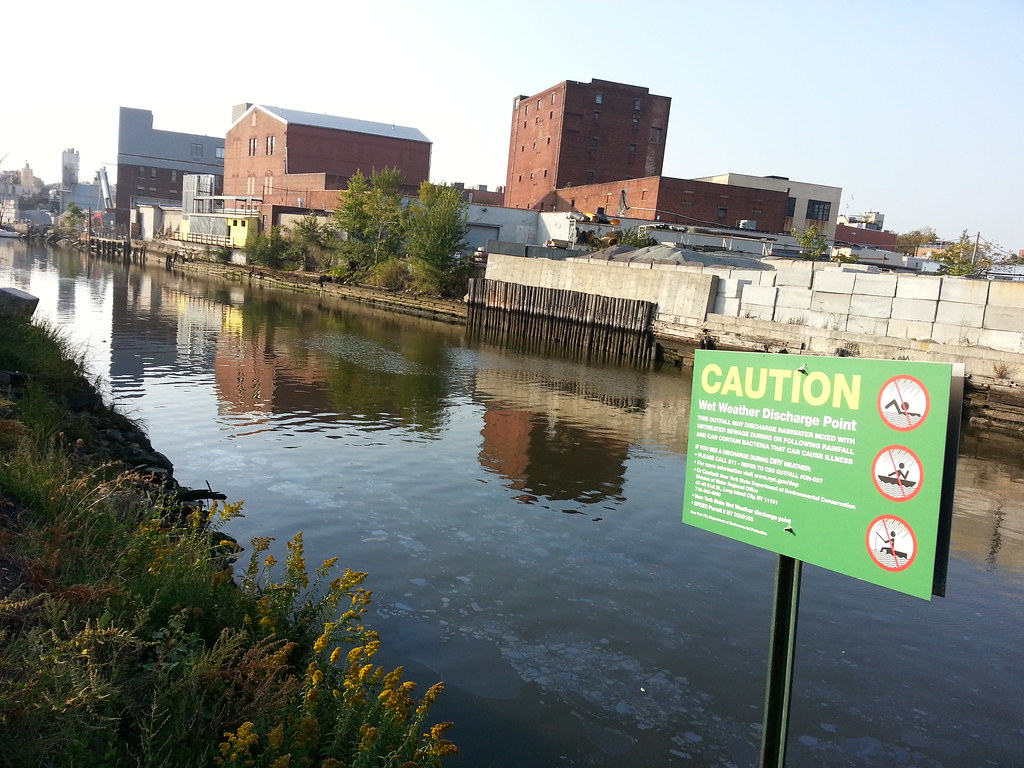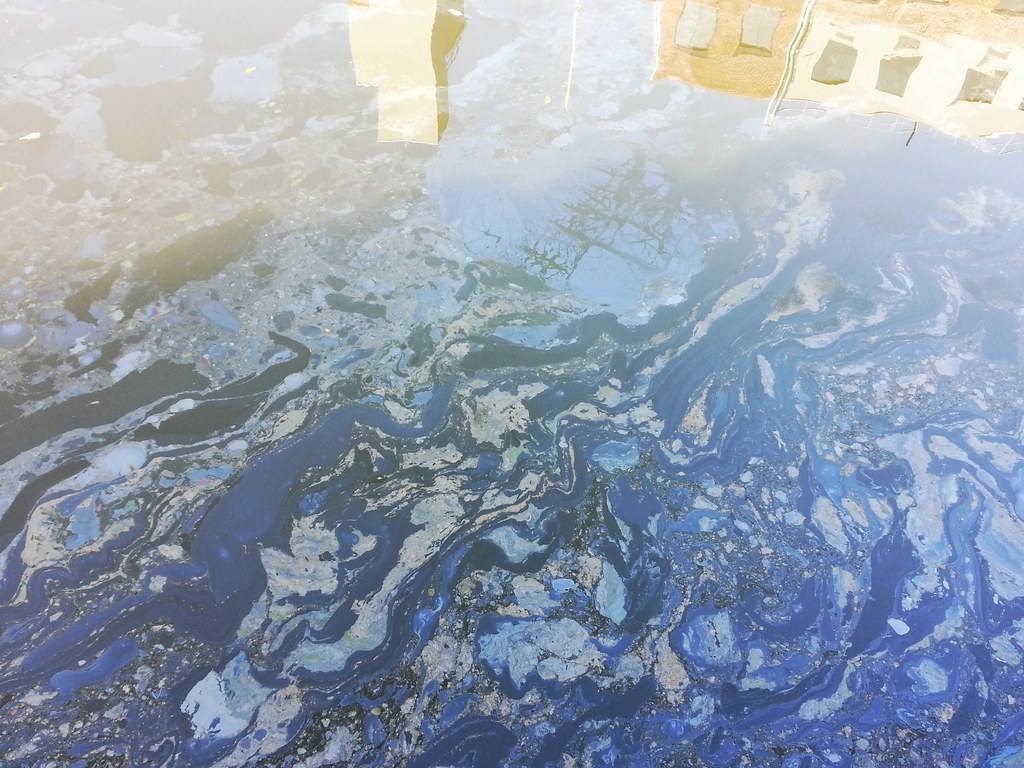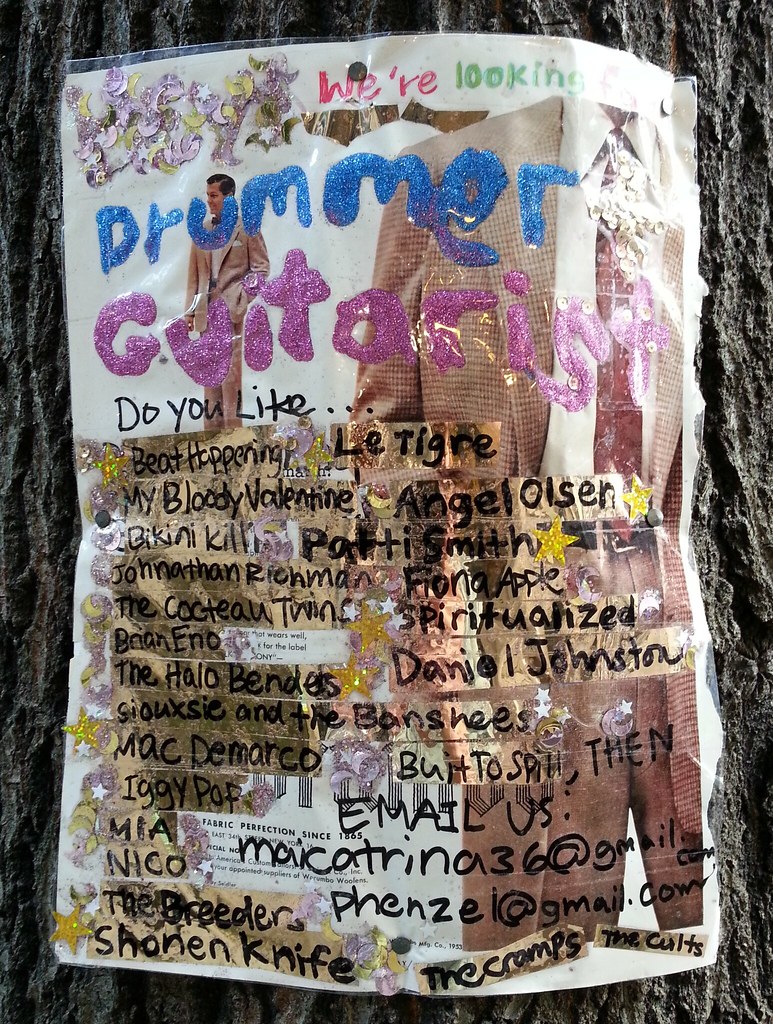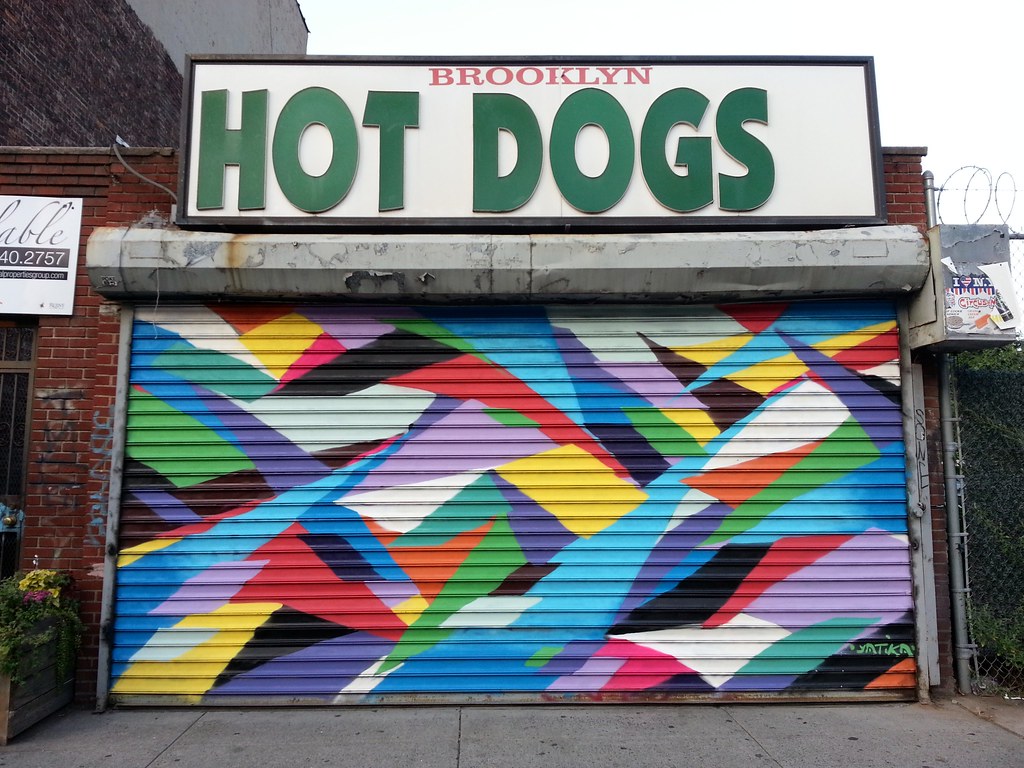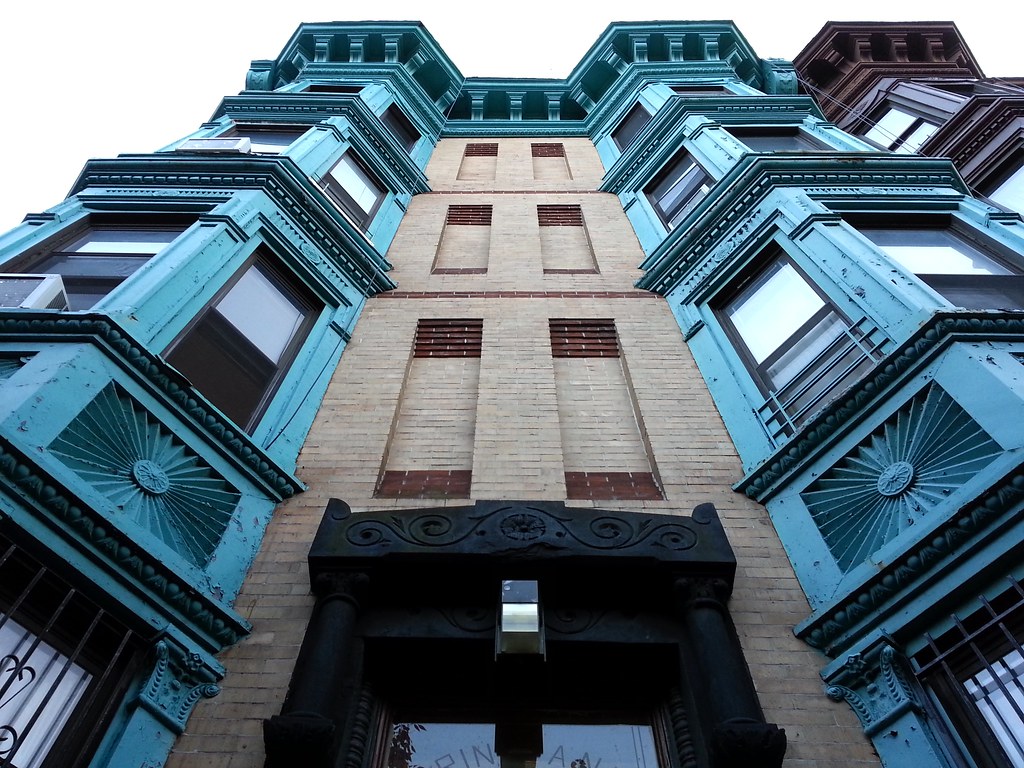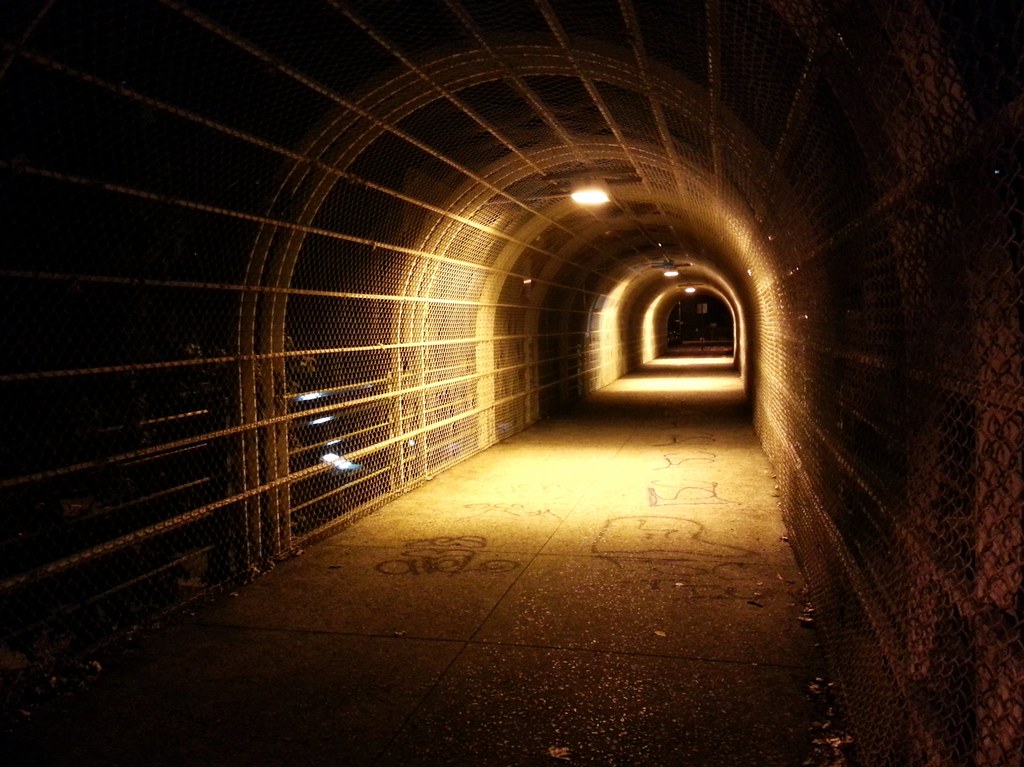
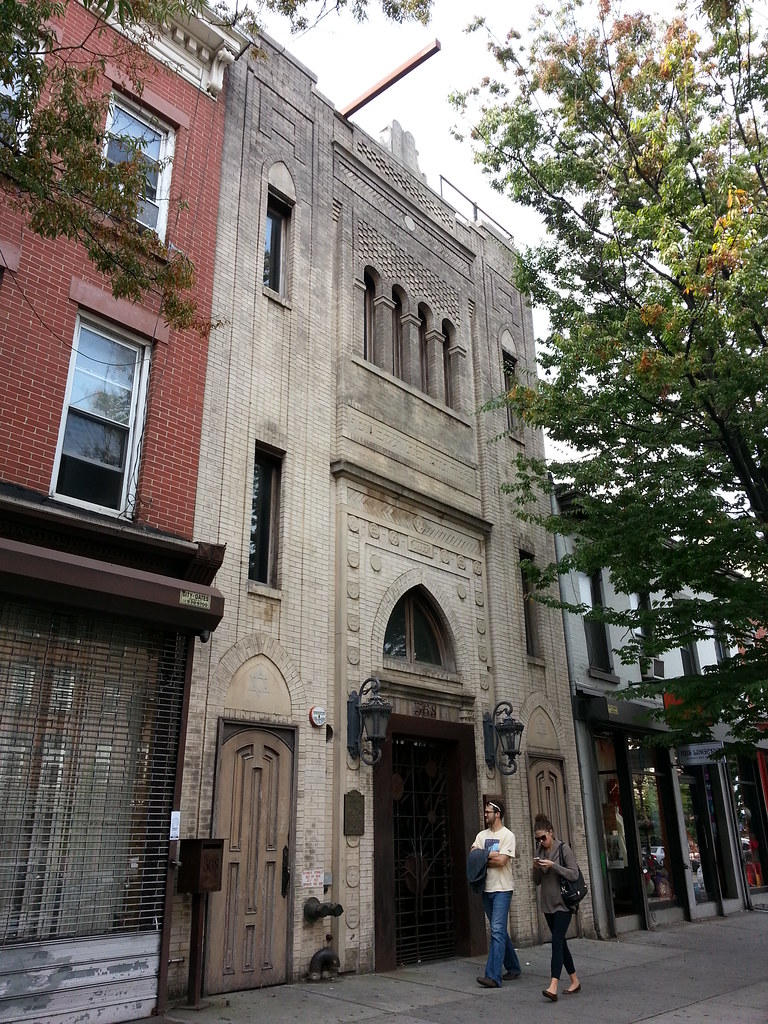
This event space and lounge, with its pagan-inspired artwork, is housed inside the former Talmud Torah Beth Jacob Joseph synagogue. A closer look reveals many traces of the building's past.
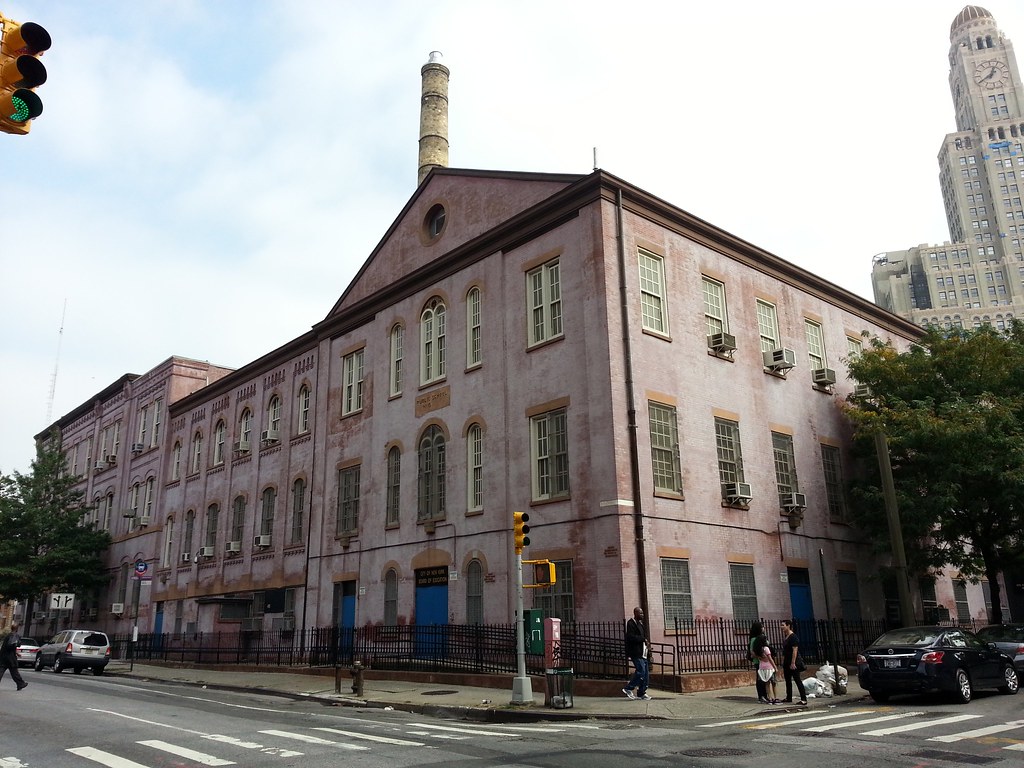
According to the AIA Guide to New York City, this "dour red-painted institutional remnant" (I guess the red has faded to pink since that was written) was erected around 1840 as the Brooklyn Boys' Boarding School, and later became Public School 15. I think the 1840 date might only apply to the portion of the structure with the peaked roof here on the corner of State Street and 3rd Avenue; as you pass down the block to the left, toward Schermerhorn Street, you encounter three architecturally distinct sections. The taller part of the building at far left, which the NY Times says was once a Civil War infirmary, now houses the relocated Khalil Gibran International Academy, as well as the final senior class of the failed Metropolitan Corporate Academy, while the rest of the complex, as far as I can tell, serves as office space for the city's Board of Education.
(That's the Williamsburgh Savings Bank Tower looming in the rear.)

It wasn't apparent when I passed by on 3rd Avenue last year, but this former Daily News garage is now a giant rock-climbing gym.
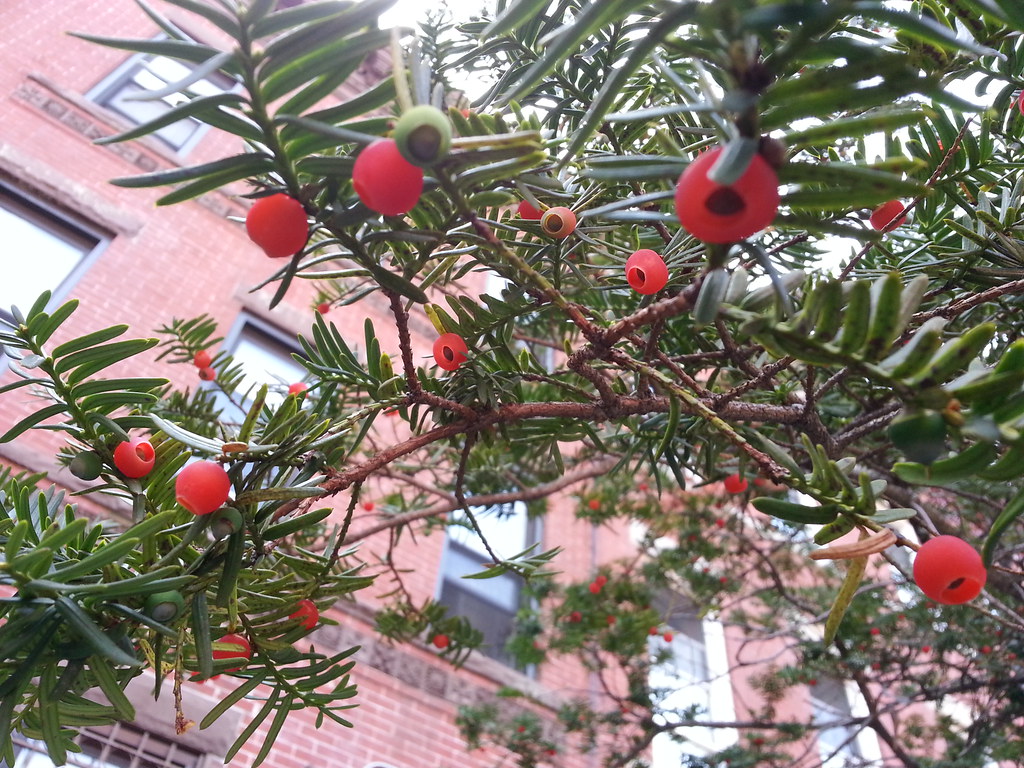
The fleshy red arils surrounding the toxic seeds are the only non-poisonous parts of the plant, but I still wouldn't recommend eating them.
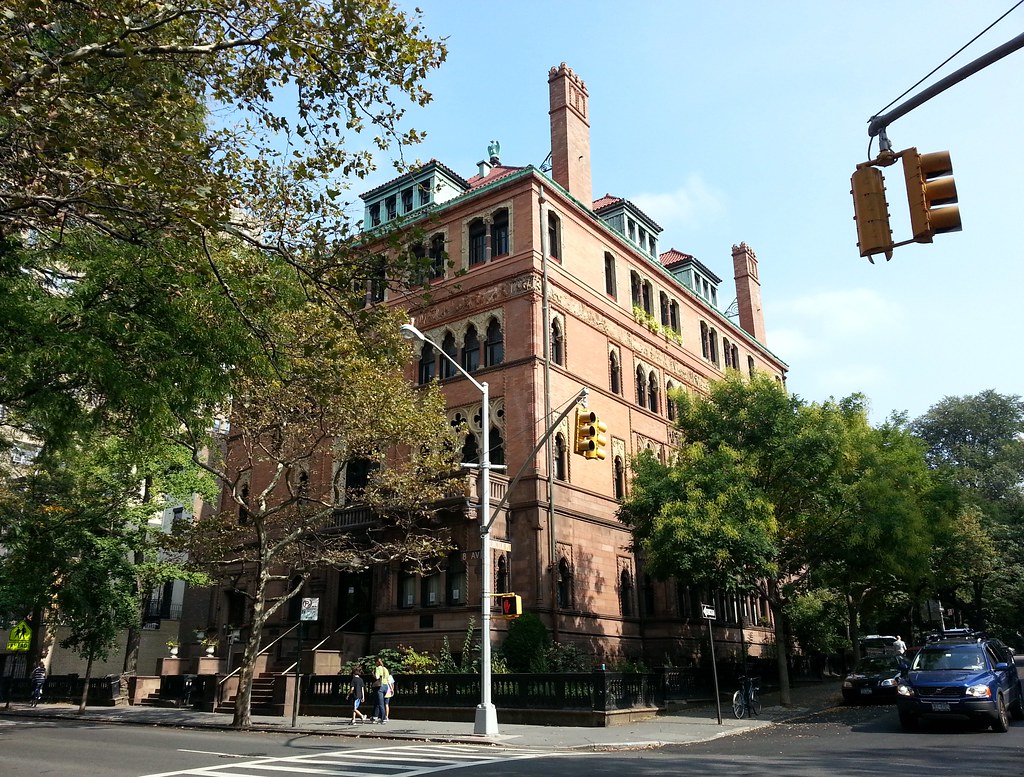
This Venetian palace was built in 1889-91 for the once-prominent Montauk Club. After struggling financially during the latter part of the 20th century, the club sold the upper two floors to a developer, who converted them into condos (pictures here).
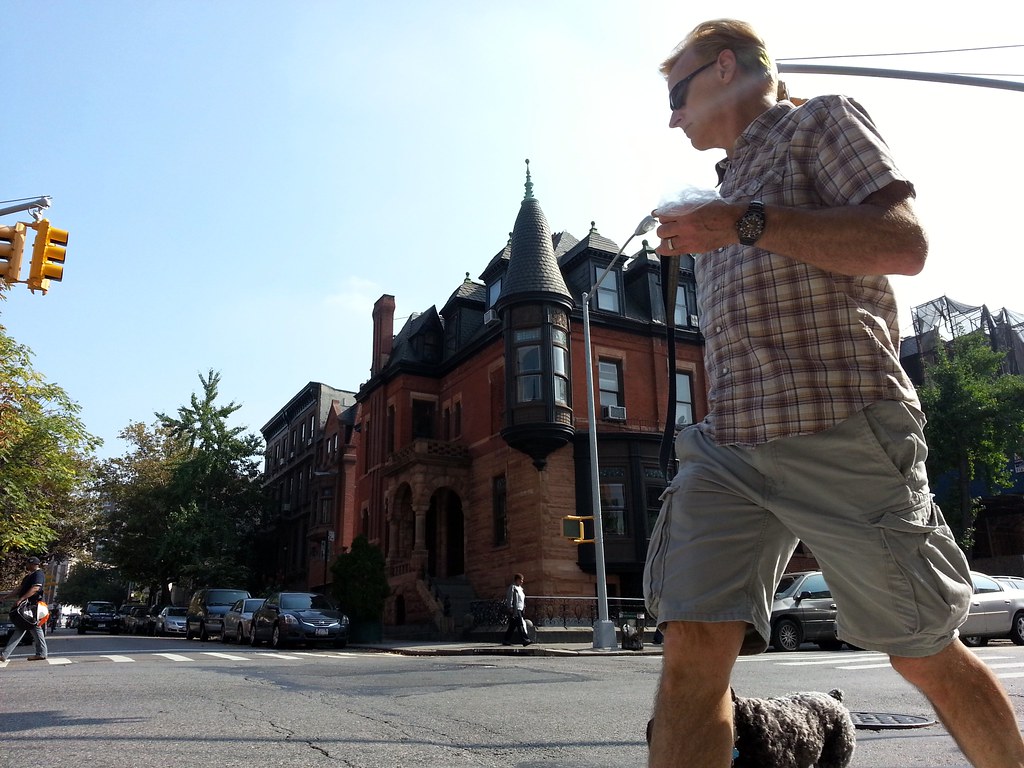
"Fifty years later . . . there is little to indicate that the corner of Seventh Avenue and Sterling Place in Park Slope, Brooklyn, bore violent witness to the worst air disaster at the time, that the disembodied leviathan tail of a ruined jet came to rest here amid flaming carnage and falling brick."
That quote is from a 2010 NY Times City Room post that goes on to describe some of the remaining signs — the "faded scars" — of what is commonly known as the Park Slope plane crash, a 1960 mid-air collision of two airliners that sent one hurtling into Park Slope and the other into Miller Army Airfield in Staten Island, killing all 128 people aboard, as well as 6 people on the ground in Park Slope. Several buildings were damaged or destroyed, but the old Lillian Ward House, above, survived intact.
(You can check out the Times's full semi-centennial City Room coverage of the disaster here.)
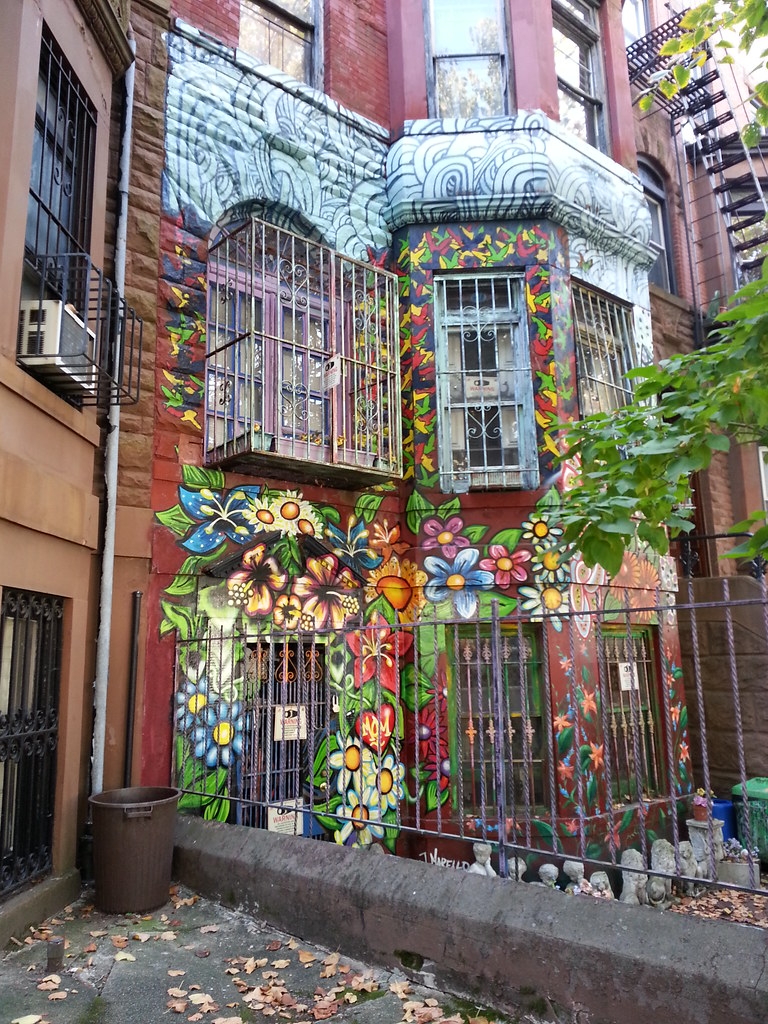
This long-vacant house got a radical new paint job last summer.

This two-story brick shell and its neighbor appear to serve as something of a portico to the taller building rising behind them.
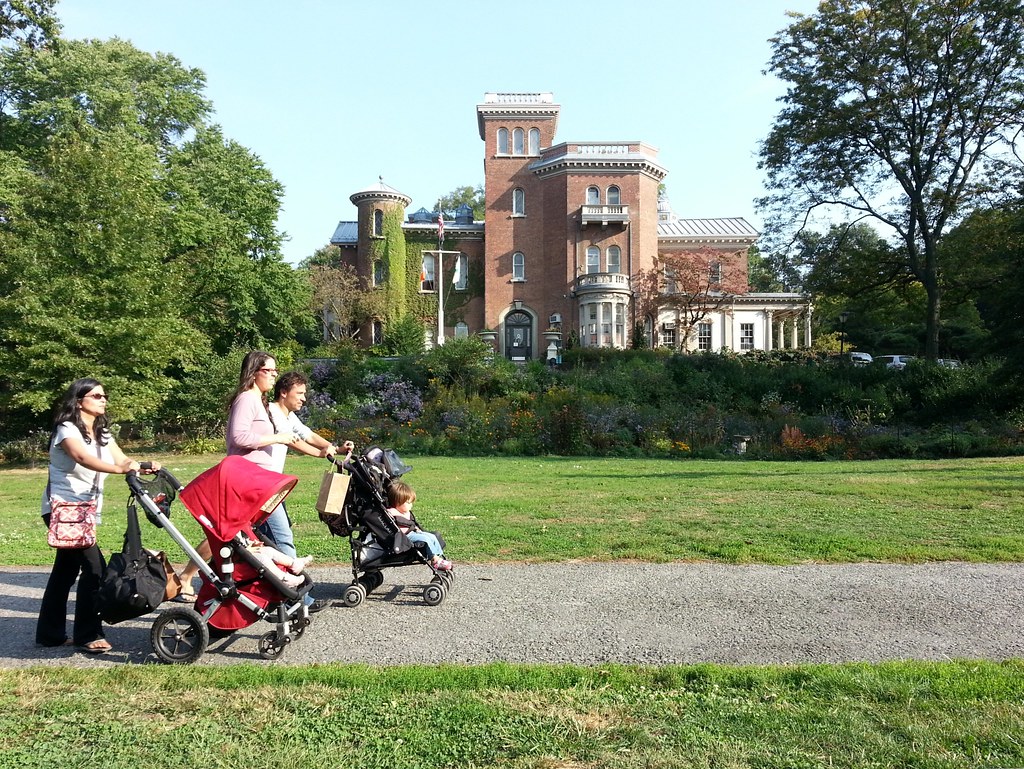
This Italianate mansion actually predates Prospect Park, in which it is now contained. It currently serves as the Parks Department's Brooklyn headquarters.

This is the outdoor seating area — complete with the phony facade of a charming wooden house — of a new Turkish cafe built where an old warehouse once stood.
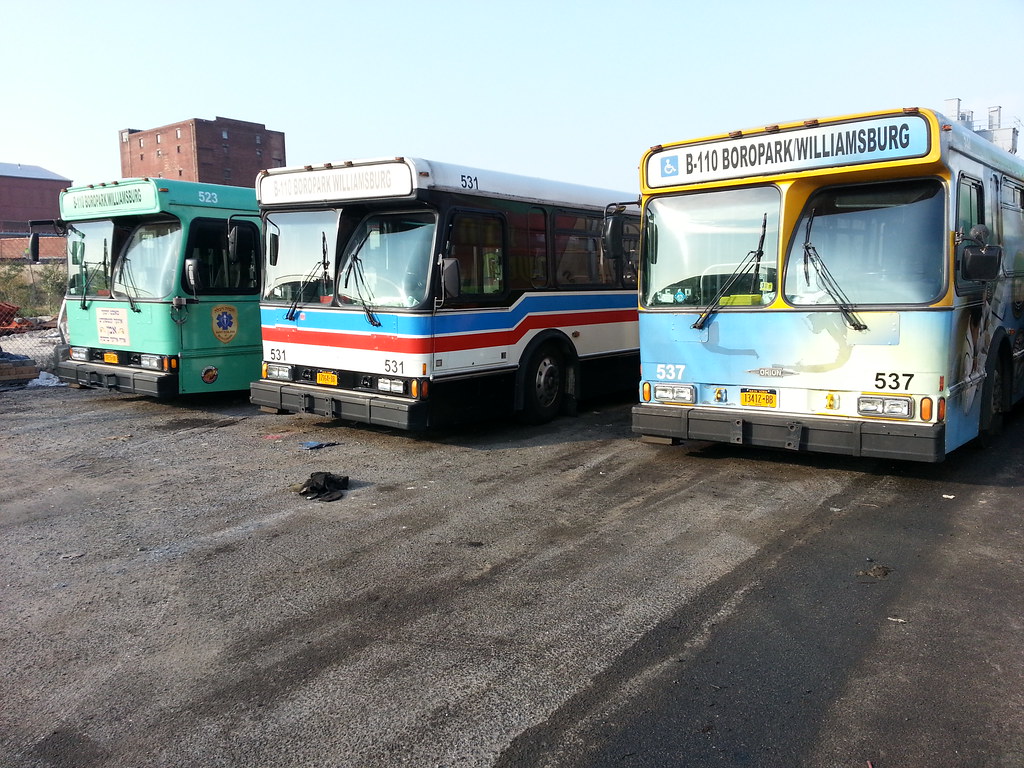
The private company that has long operated this public bus line (which provides service between the heavily Hasidic Brooklyn neighborhoods of Borough Park and Williamsburg) found itself briefly in hot water a couple of years ago over the segregation of men and women on its buses. Ultra-Orthodox Judaism requires such separation of the sexes, but even non-Jewish women were reportedly being told that they had to sit in the back of the bus. After receiving a warning letter from the city DOT, however, the company said it would take steps to end the practice.

In 1975, in anticipation of eventually turning the area into a waterfront park, the city condemned the property on which this concrete plant stands, turning Mr. Ferrera from a landowner into a tenant; he's been renting his land back from the city ever since. There was talk of finally evicting the plant a few years ago and replacing it with a residential development and some parkland, but that plan appears to have gone nowhere.
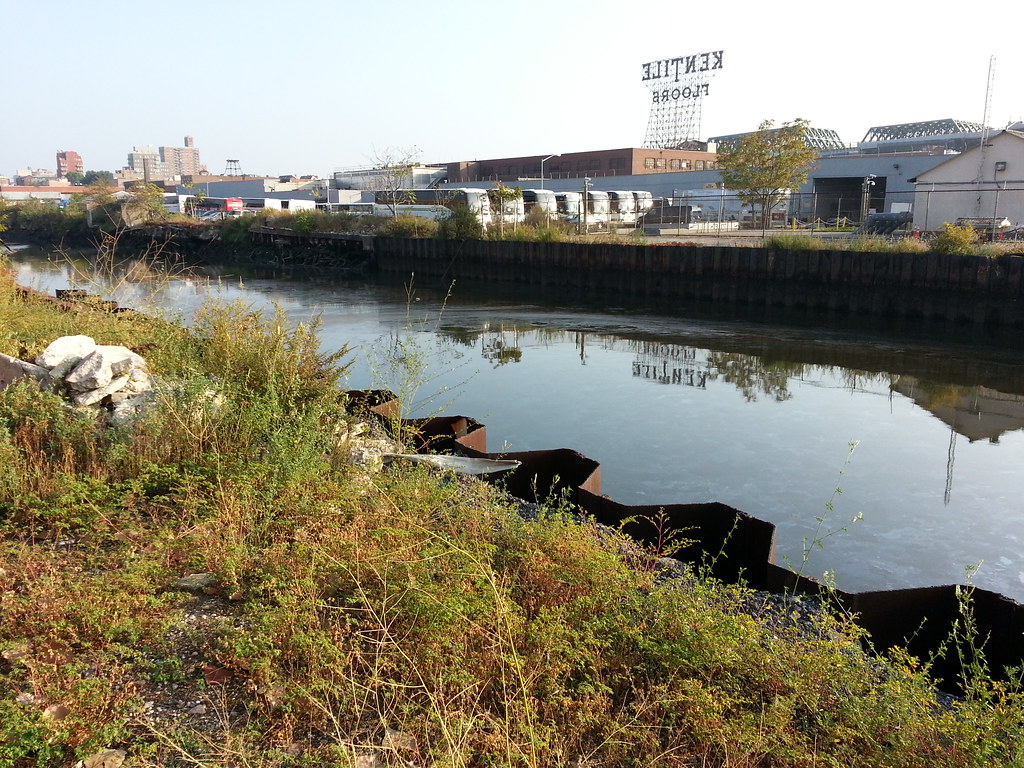
Asbestos killed the company, but the sign's still hanging in there.

Time-lapse plant photography on a raft in the Gowanus Canal
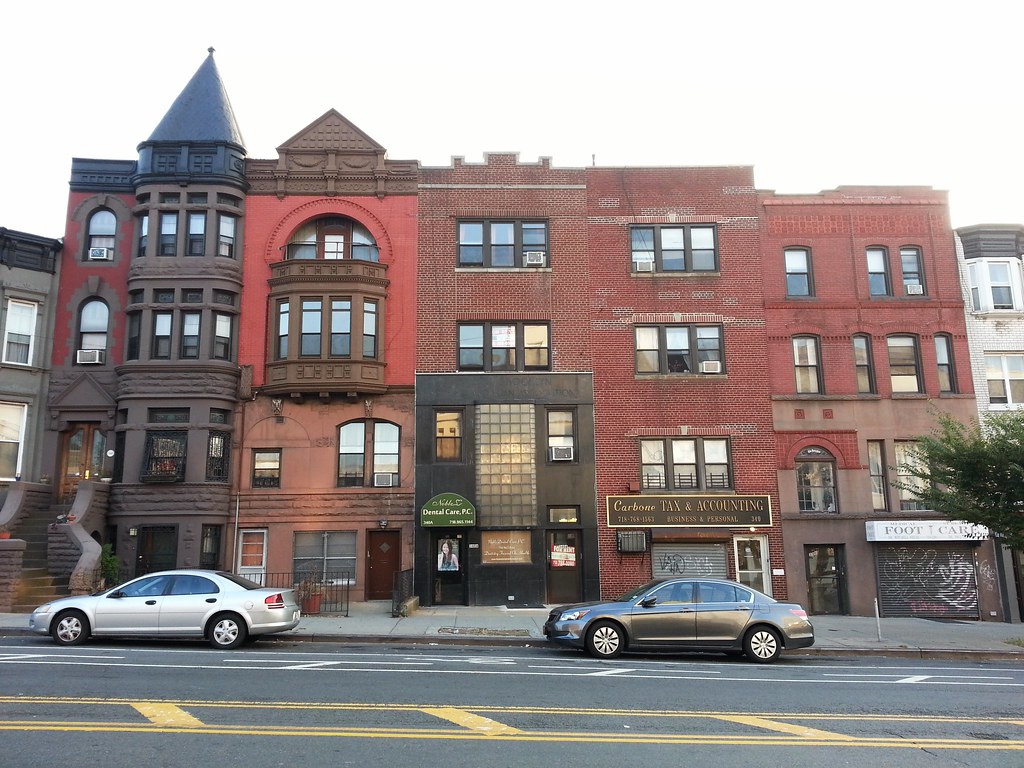
The building in the center, currently the home of Noble Dental Care, was once a branch of the South Brooklyn Savings and Loan Association.
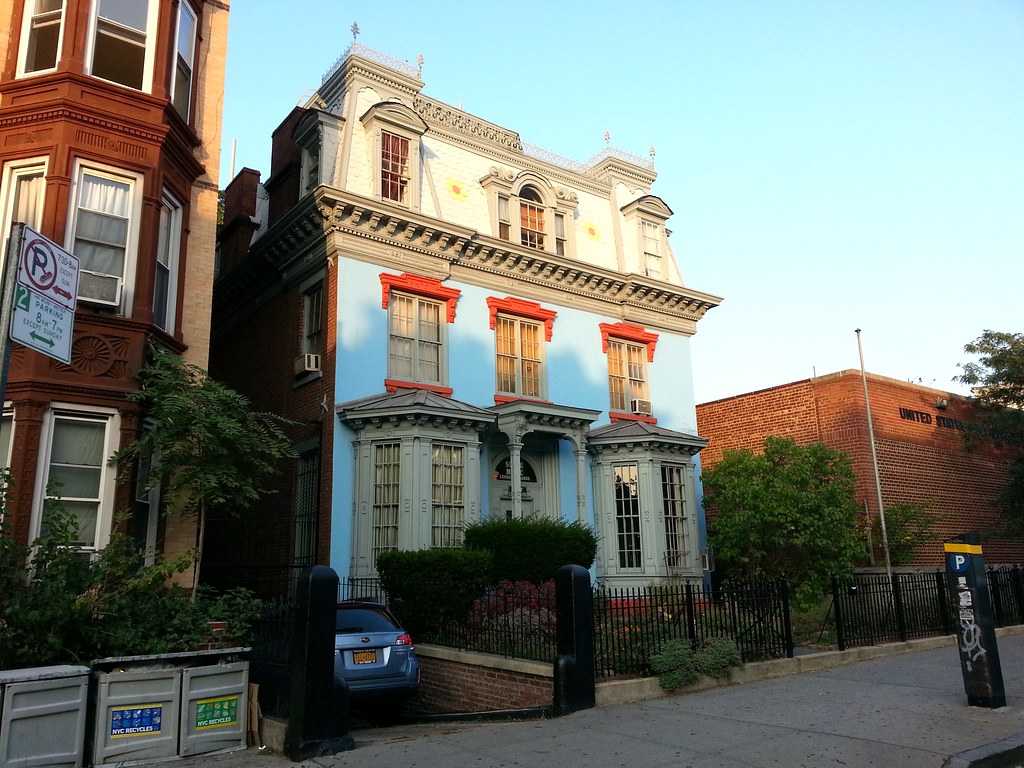
Built in 1856-57; formerly the headquarters of the Higgins Ink Company

This graffitied-over Revolutionary War mural painted on the side of an American Legion post in Gowanus, Brooklyn overlooks the vacant lot where some local historians believe as many as 256 members of the Maryland 400, the gravely outnumbered soldiers whose self-sacrificial counterattacks against the British during the Battle of Brooklyn "saved the American army", lie buried in a mass grave.
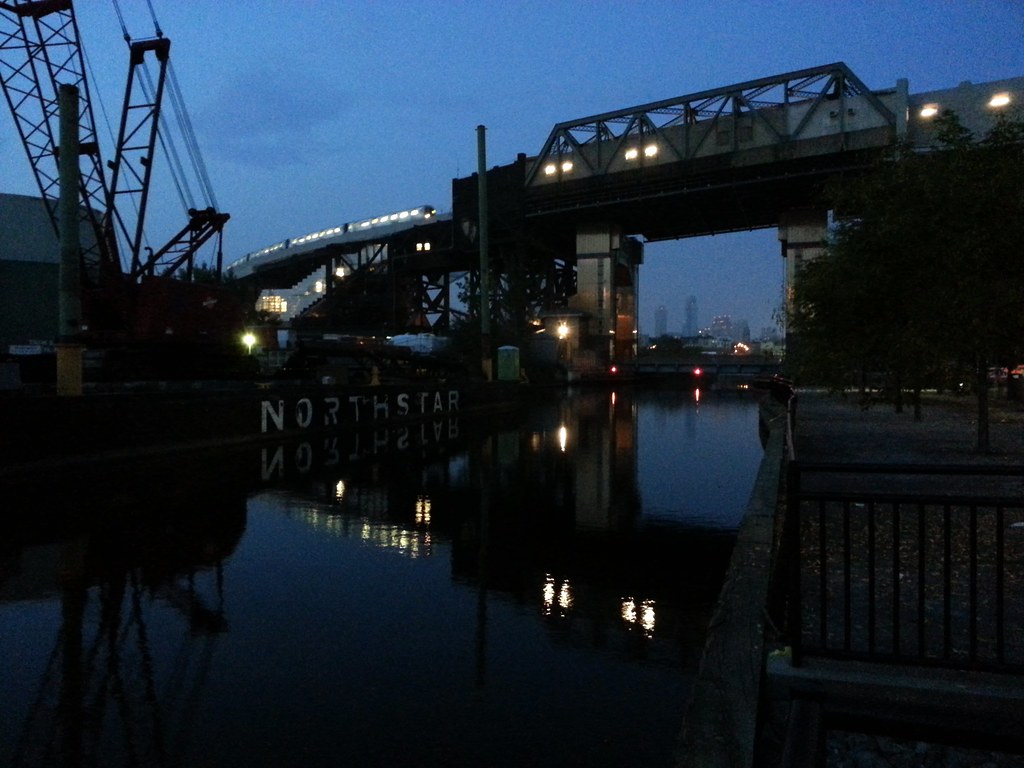
I'm taking this photo from a strange little public waterfront area at the edge of a Lowe's parking lot. Up on the Culver Viaduct, you can see a southbound G train about to enter the Smith–Ninth Streets station, which stands 87.5 feet above street level, making it the highest subway station in the world, according to the MTA.

